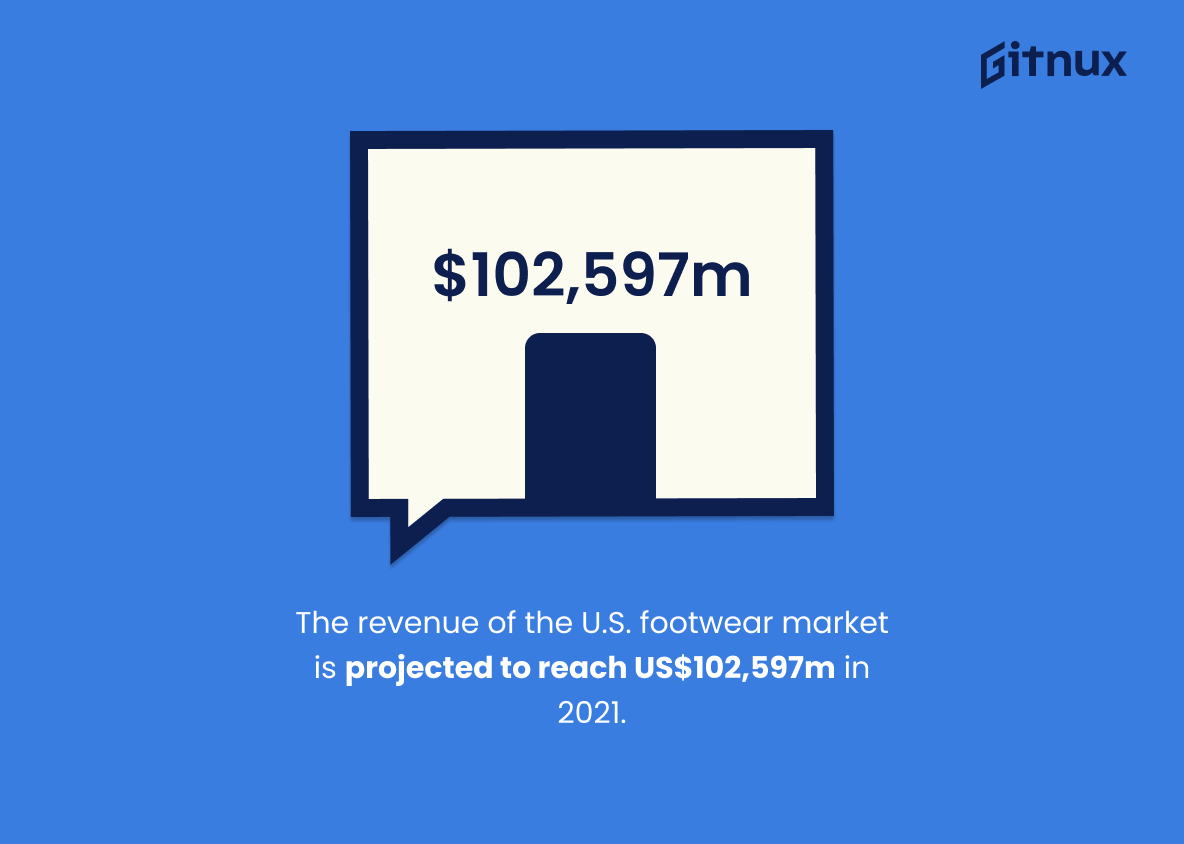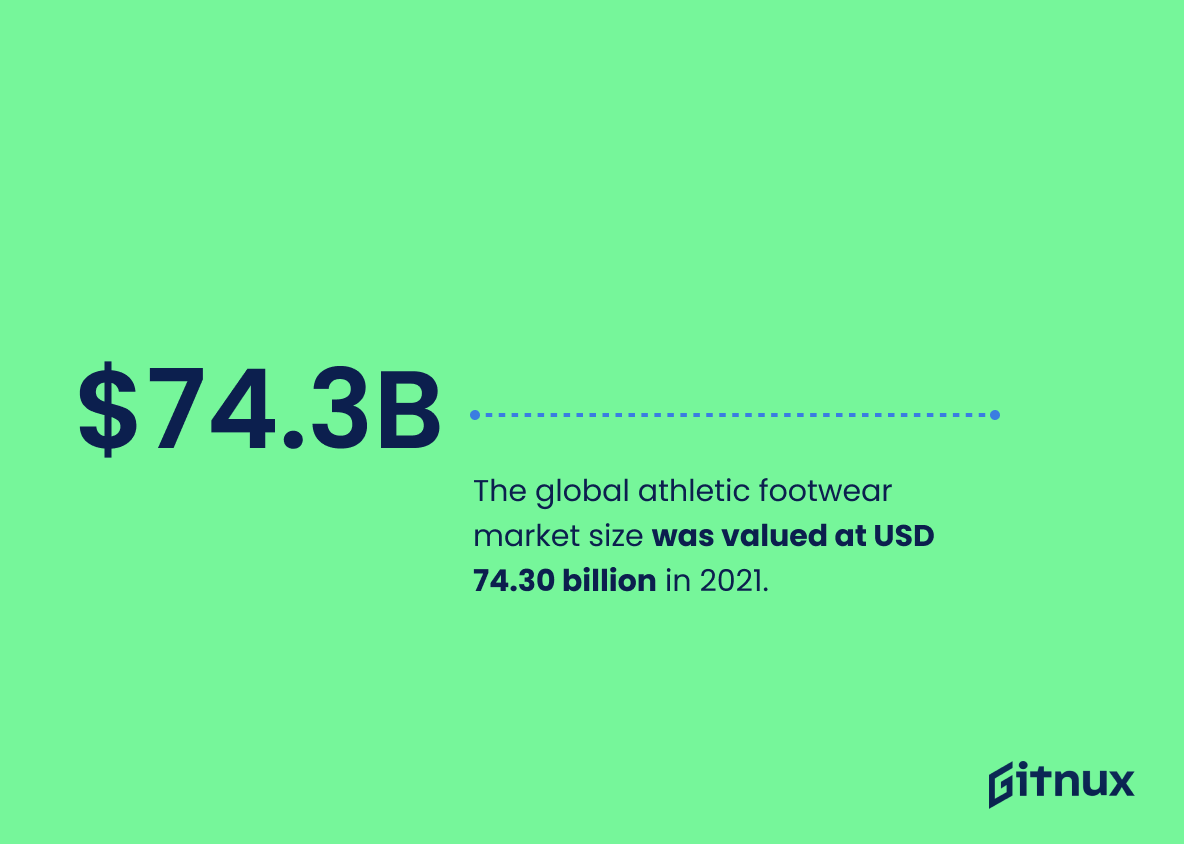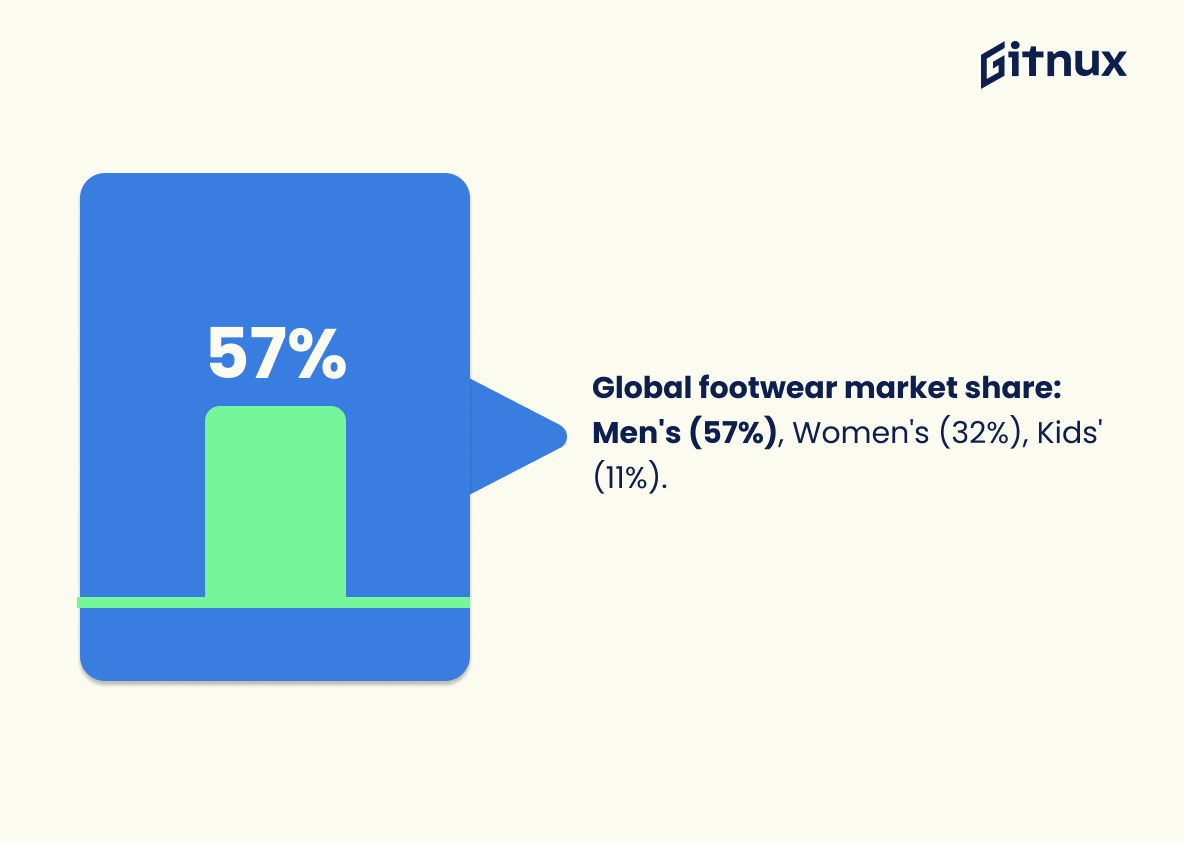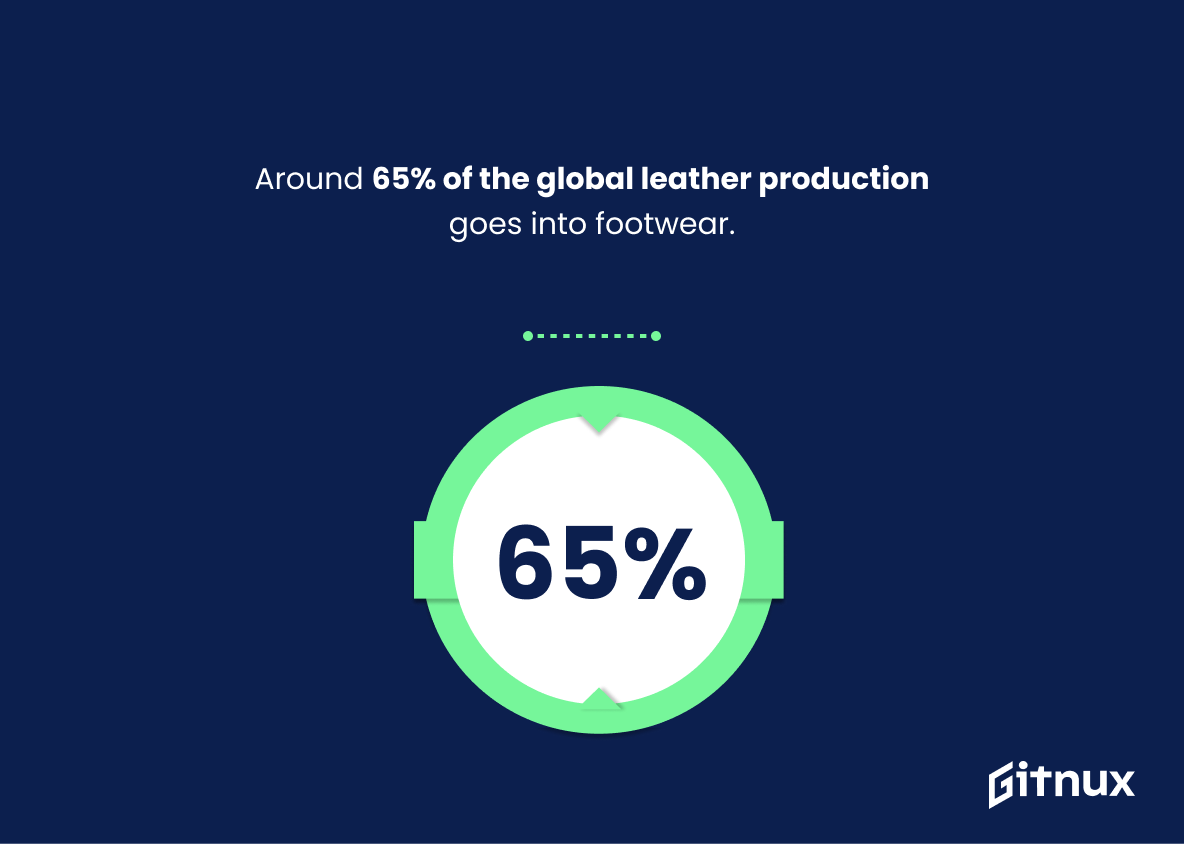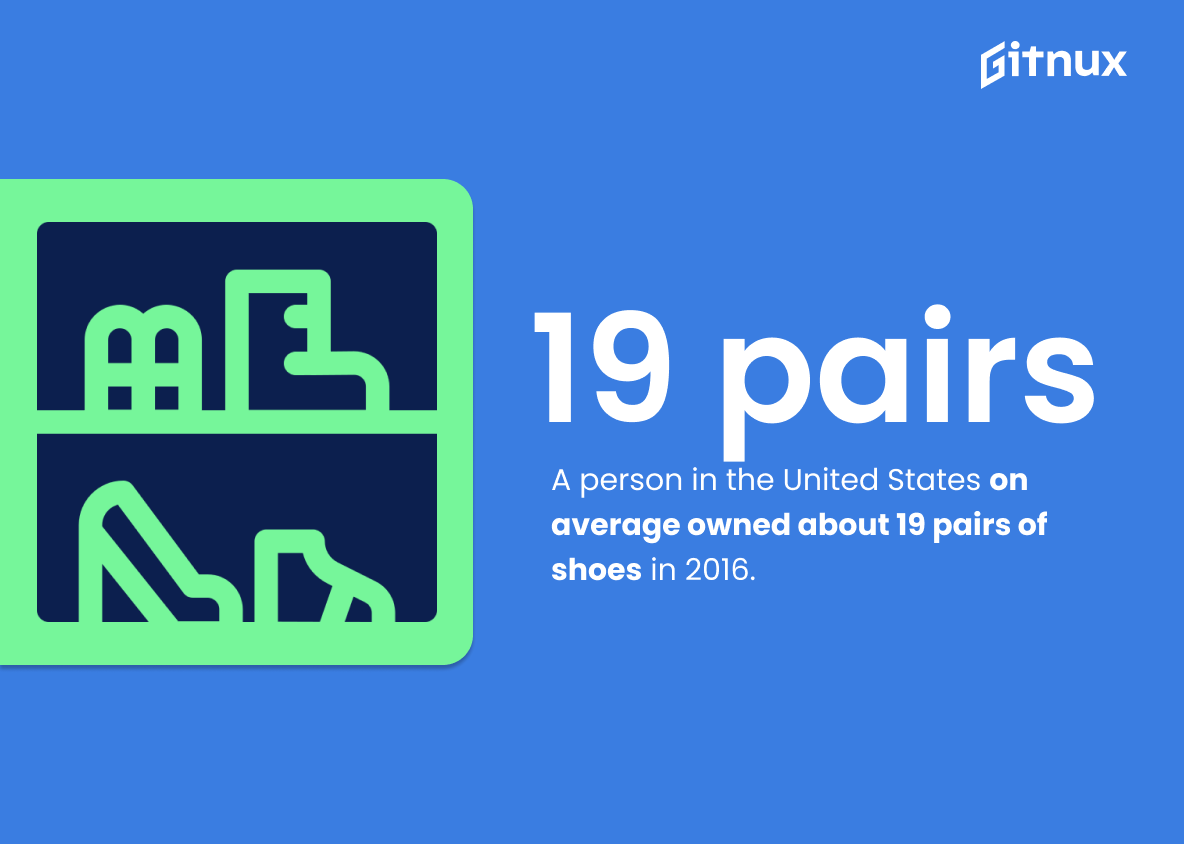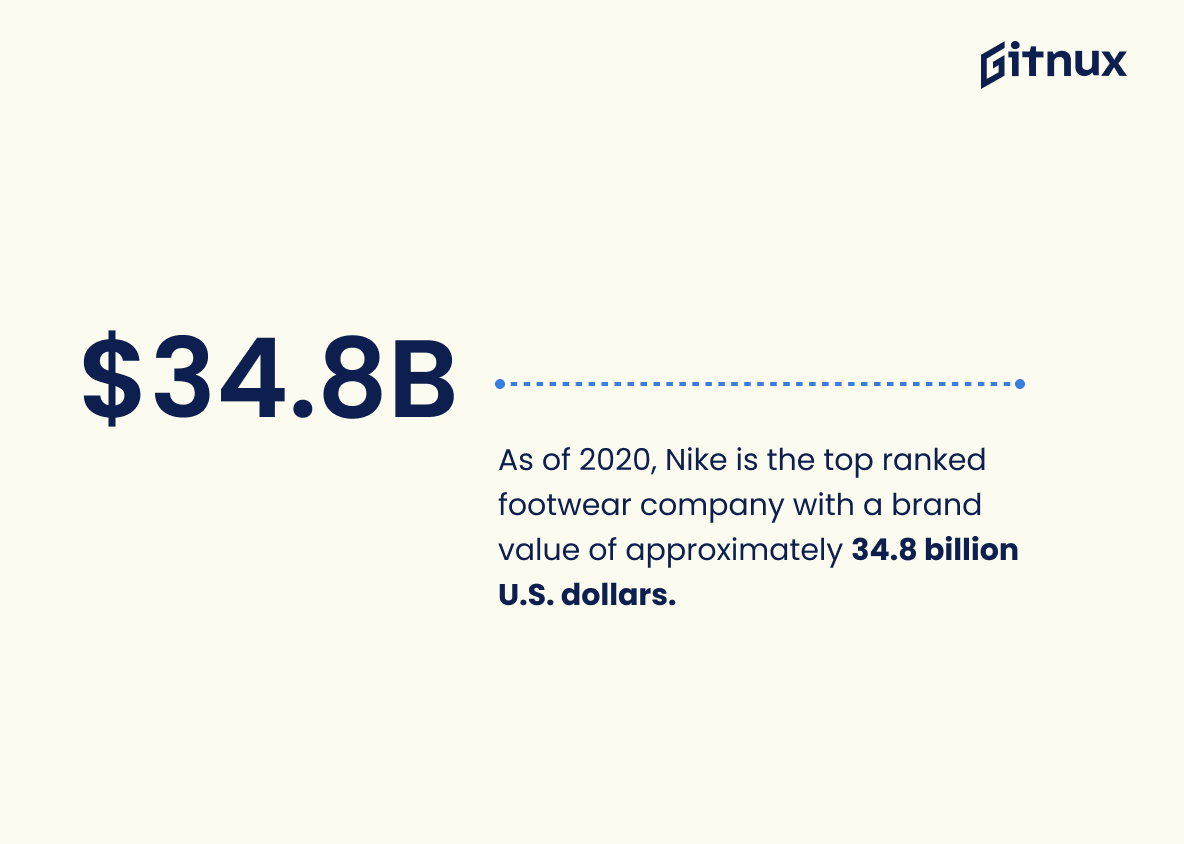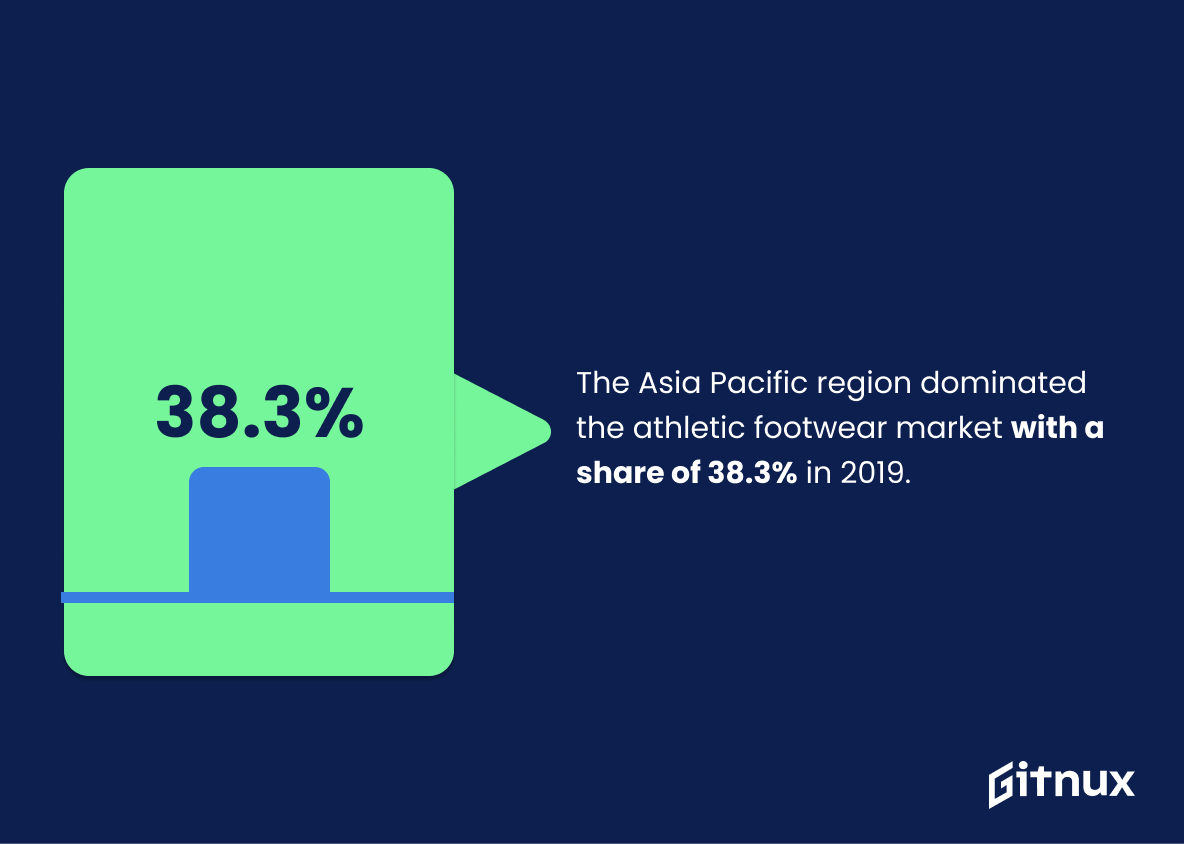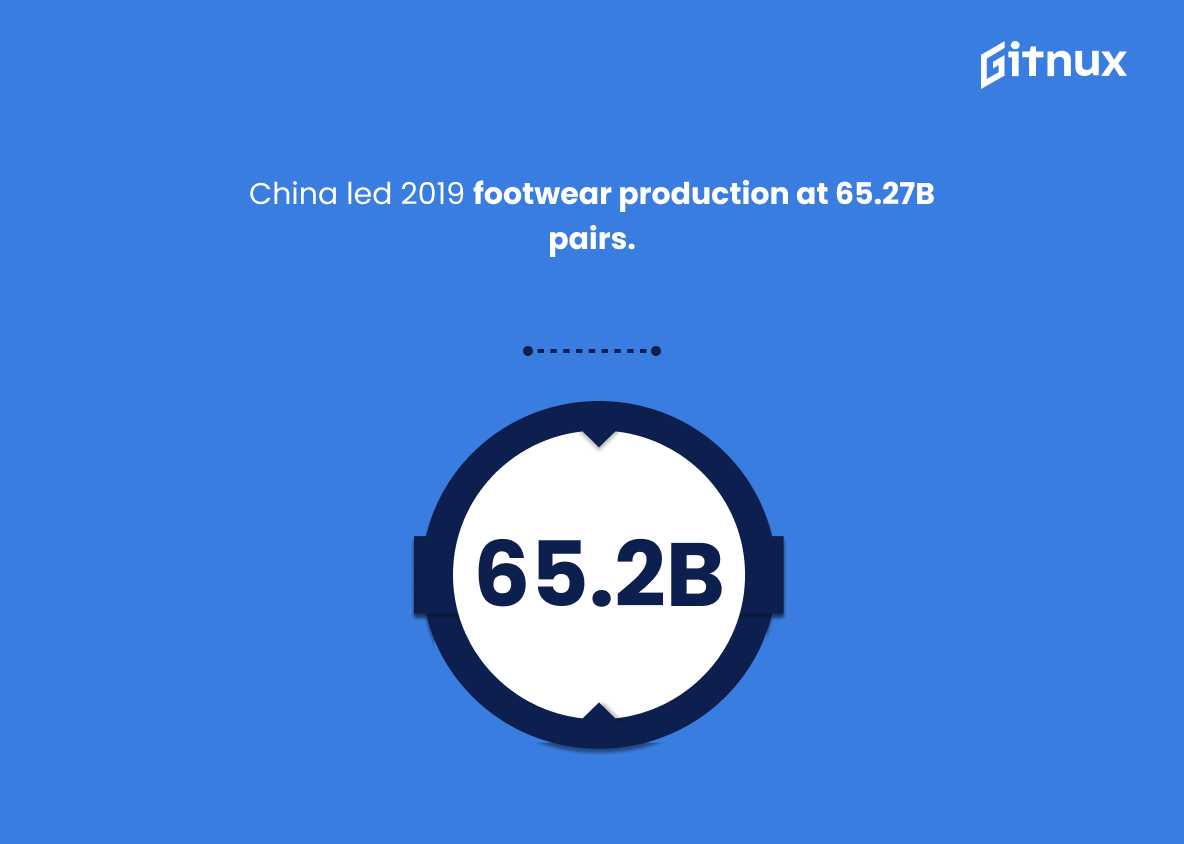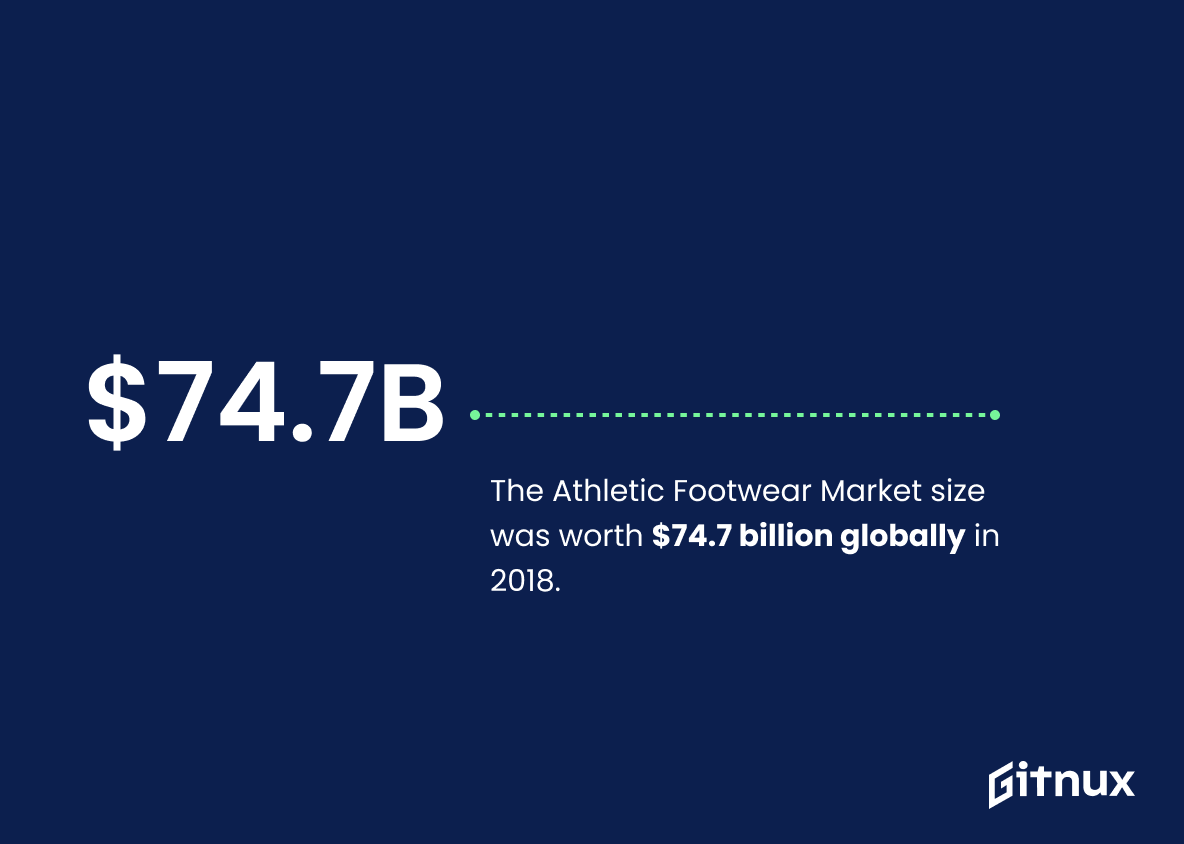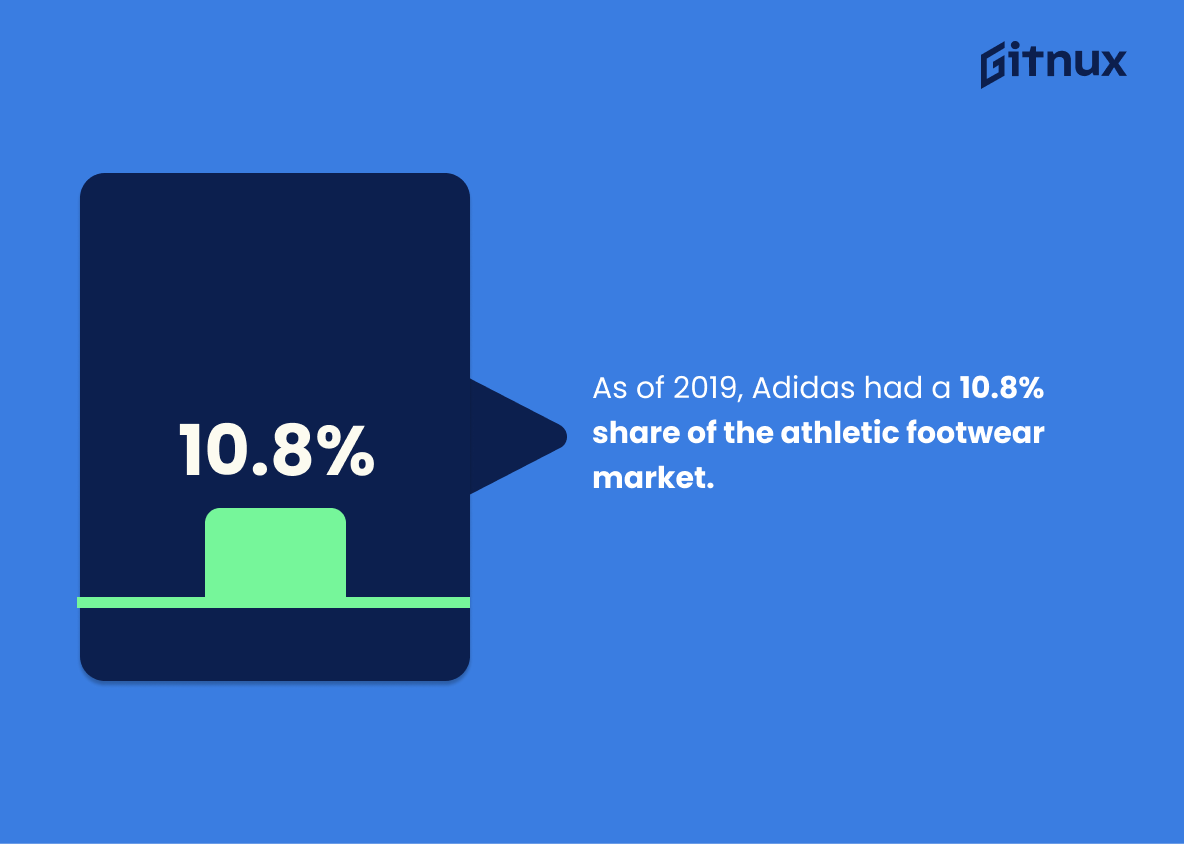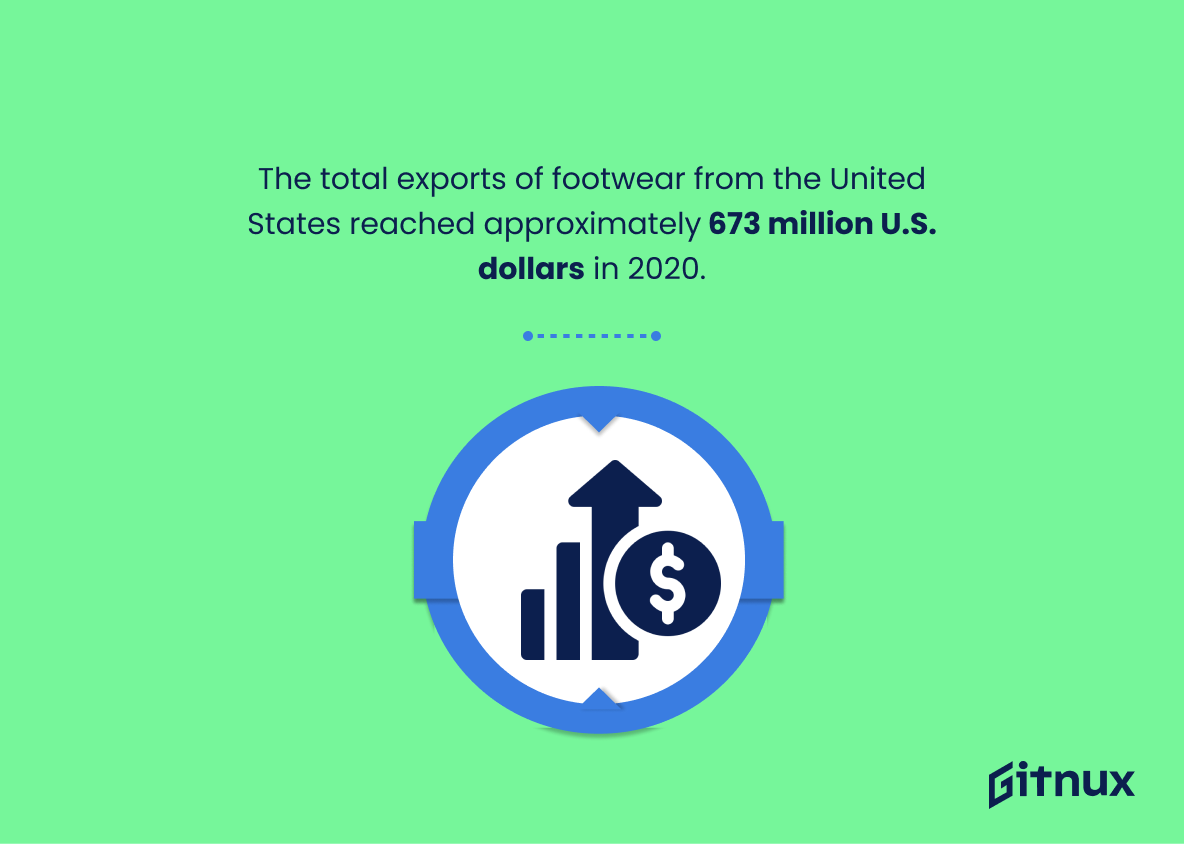Striding into the world of the footwear industry can feel overwhelming, especially without a strong grasp of the key trends, facts, and figures shaping the market. In our dynamically evolving world, understanding the footwear industry’s statistics is crucial for every business, retailer, or fashion aficionado.
Whether you want to know about the most profitable segments, emerging markets, or the impact of sustainability on the industry, these data hold the key. Join us as we lace up our investigative boots and delve deeper into the fascinating, fast-paced world of footwear industry statistics.
The Latest Footwear Industry Statistics Unveiled
The global footwear market was valued at approximately 365.5 billion U.S. dollars in 2020.
This illuminating figure of the global footwear market standing at approximately 365.5 billion U.S. dollars in 2020 serves as a potent testament to the enormous scale and economic significance of the footwear industry. As though woven into the very fabric of this blog post about footwear industry statistics, this data point underscores the thriving realities and expansive potential of the industry.
With this understanding, readers can appreciate the tremendous impact of the global footwear market on various linked sectors including manufacturing, retail, and design. It unfurls a panorama of vision and insights, allowing one to grasp the sheer magnitude of the industry and its intriguing possibilities for growth and evolution in the future.
The revenue of the U.S. footwear market is projected to reach US$102,597m in 2021.
Spotlighting an astounding projection, this figure tosses a radiant glimmer onto the runway of the U.S. footwear market, revealing the industry’s seemingly unstoppable financial hustle reaching towards a whopping US$102,597 million in 2021. It serves as a potent testament to the dynamism and relentless growth potential prevalent within the industry, enhancing the overall impact of the blog post.
Furthermore, it underscores the amplitude of consumer demand, technological innovations, design revolutions, and branding strategies that are playing their parts in shaping this lucrative industry landscape. This financial forecast not only shadows the dollars game but also illuminates the broader economic narrative within footwear industry in the U.S, magnifying the dimension of the business for the readers of the blog post.
The global athletic footwear market size was valued at USD 74.30 billion in 2021.
Delving into the monumental valuation of the global athletic footwear market, an astounding figure of USD 74.30 billion in 2021 serves as a bellwether that echoes the pulsating trends and consumer preferences in the footwear industry.
This figure, strapped like a robust underlying current, essentially sculptures the narrative of a blog post centered around Footwear Industry Statistics. Its immense relevance paints a vivid tableau of the industry’s robustness and resilience, acting as a magnifying lens to observe changing market dynamics, consumer behavior, and critical growth propellers.
Men’s footwear has the largest market share (57%) in the global footwear industry, followed by women’s footwear (32%), and kid’s footwear (11%).
The digit parade displayed above doesn’t just look particularly compelling on the surface, but it becomes particularly intriguing once we step into the footwear industry statistics. Taking the largest strut on this global catwalk, men’s footwear seizes the lion’s share of this thriving industry, claiming a mammoth 57% of the total market. This quite convincingly portrays men’s shoes as the dominant mover and shaker of the industry. However, this doesn’t overshadow the considerable contribution of the tag-along segments. Women’s footwear, striding closely with a 32% share, highlights the significant role it plays, sure footed in fashion, comfort and functionality.
Not dwindling far behind, children’s footwear carves an impressive 11% of the market pie, undeniably underlining its indispensable role in fueling the industry’s growth. Each of these slices, individually substantial, together form a panoramic snapshot of the dynamic tapestry that is the global footwear industry. An analysis of these interrelationships provides a solid foundation from which to make future market projections, steer investments, and shape marketing initiatives.
Around 65% of the global leather production goes into footwear.
Navigating through the intriguing world of footwear industry statistics, it’s a revelation to discover that a mammoth share of around 65% of global leather production is dedicated exclusively to footwear. This figure not only emphasizes the dominance of leather as a core material in shoe manufacturing but also underscores the vital role the footwear industry plays in shaping global leather markets.
Surprisingly, despite other industries demanding leather, the footwear industry continues to be its biggest consumer, lighting the way to an understanding of market trends, predicted growth, and the potential challenges faced by both the leather and footwear industries alike. This substantial percentage becomes the pulse and compass for industry strategists and fore-tells the strength and enduring preference for leather in this industry. Thus, it’s more than a mere statistic—it’s a testament to the unraveled sustainability and growth potential of the footwear industry.
A person in the United States on average owned about 19 pairs of shoes in 2016.
Undoubtedly, the statistic that an average American owned near 19 pairs of shoes in 2016 sends a significant signal about the health and vitality of the U.S. footwear industry. Echoing the prosperity and the scale of consumer consumption, this figure offers a glimpse into the insatiable shoe appetite that Americans have, providing palpable evidence of the thriving demand within this industry.
Furthermore, such a robust demand underpins the potential growth of the sector, giving footwear sellers essential insight into the habits and preferences of their target audience. This valuable knowledge serves to guide strategic planning, product development, and marketing strategies in an ever-competitive market.
The Latin American footwear market is projected to reach USD 28.77 Billion by 2025.
Unveiling the potential of the Latin American footwear industry, the estimated rise to a towering USD 28.77 Billion by 2025 is instrumental in understanding the industry’s future growth trajectory. For those navigating the intricate landscape of the footwear industry, such a projection provides a compelling insight into the lucrative opportunities to be harnessed.
This forecast, thus, doesn’t merely represent a number; it stands as a symbol of the region’s burgeoning market that beckons global investors and producers to tap into its untapped potential. It fashions an effective tool for evaluating market strategies, forging robust business planning, and driving competitive advantage. Inherently, within a blog post about Footwear Industry Statistics, this projection dons the role of a guidepost for shaping informed decisions and fostering innovation in the vast expanse of footwear commerce.
As of 2020, Nike is the top ranked footwear company with a brand value of approximately 34.8 billion U.S. dollars.
Emphasizing the power play in the footwear industry, the striking figure of Nike, valued at around 34.8 billion U.S. dollars as of 2020, stands as an unmissable beacon of meteoric success. Home-run in the rankings, it sets the gold standard of achievement within the sector and provides an invaluable reference point for assessing the performance, growth and competitive landscape of the footwear world. This extraordinary feat places a magnifying glass on the potential profits and lofty heights attainable in the sneakers kingdom-come, while compelling other brands to run faster on the industry’s competitive track.
The Asia Pacific region dominated the athletic footwear market with a share of 38.3% in 2019.
Anchoring its prowess in the athletic footwear market, the Asia Pacific region displayed a dominating grip with a hefty market share of 38.3% in 2019. Reflecting on this notable statistic provides valuable insights for the blog post about Footwear Industry Statistics. It serves as a relevant testament of the region’s expansive production output, as well as its substantial consumer demand.
This substantial percentage underscores the Asia Pacific’s sports footwear landscape, illustrating its profound impact on global trends. It paints a vivid picture of this region as a vital hub in the athletic footwear industry, potentially dictating the pace and direction of global marketplace flow. Its importance cannot be understated, acting as a significant compass for market investors, researchers, and stakeholders in understanding the current dynamics and future growth potentials of the global footwear market.
China was the biggest footwear producer in the world in 2019, with a production volume of about 65.27 billion pairs of shoes.
In the vibrant tapestry of Footwear Industry Statistics, the jewel that shines brightest hails from the Far East. Imagine this – in 2019 alone, China birthed a staggering 65.27 billion pairs of shoes, claiming the crown as the global titan of footwear production. This mammoth volume isn’t just a number, but a testimony to China’s dominance in this arena, an intricate footprint of its manufacturing prowess.
This highlights the significant role China carries in narrating the saga of global footwear manufacture, upshipping the narrative in the blog post concerning the statistics fueling the industry. The dizzying figure serves as a yardstick, measuring China’s influence on market dependability, price points, trends dynamics and sourcing strategies worldwide – essentially the heart of what shapes footwear industry.
Approximately 2/3rd of the workers in the footwear industry are women.
Drawing from the revealing statistic- “Approximately 2/3rd of the workers in the footwear industry are women”, we can dissect an intricate panorama of the Footwear Industry. Reflecting the gender demographics contours an industry’s identity, fostering understanding of its structure and culture, thus bolstering the blog’s goal of providing comprehensive industry statistics.
The feminine dominance in this sector is a compelling narration in itself, unearthing the positive strides towards gender inclusion that the footwear industry showcases. For those concerned with equality issues, this data point projects it as a potential avenue for women’s employment and empowerment. For organisations and potential investors, it offers an idea about the workforce composition, thereby aiding strategic decisions related to employment, marketing, advertisement, and product design.
Furthermore, this statistic questions the assumption that manufacturing industries are overwhelmingly male-dominated. In unmasking this reality, it further galvanises conversations about women’s significant contributions to the industry, laying the groundwork for deeper exploration into industry dynamics, remuneration fairness, growth opportunities, and worker satisfaction. The statistic thus vividly weaves the human element and socio-economic factors into the raw numbers of the industry, truly capturing its essence.
The global footwear market is anticipated to display a CAGR of 6.6% annually from 2022 to 2028.
Diving into the thrilling world of footwear industry statistics, we walk into a revelation that the global footwear market is set to lace up for a promising journey ahead. Envision a staggering 6.6% CAGR annually from 2022 to 2028. This is not just a number; it’s a powerful testament to the industry’s potential for growth and profitability. Here you have a powerful statement about the dynamic and high-paced ecosystem of footwear.
Each percentage point tells a tale of innovation, increasing consumer demand, emerging markets, and shifts in fashion trends. Ultimately, this vibrant figure portrays the future of the footwear industry, shaping a narrative of unprecedented advancement and expansion expected in the coming years.
The Athletic Footwear Market size was worth $74.7 billion globally in 2018.
Highlighting the valuation of the Athletic Footwear Market at $74.7 billion globally in 2018 provides a striking picture of the immense scale and economic potential of this sector in the footwear industry. From a bird’s eye perspective, this figure not only underscores the robust demand for athletic shoes, but also captures the vast growth opportunities for both established and up-and-coming players in this market.
This stat unveils unprecedented insights, revealing a thriving industry driven by consumer preferences towards health, fitness, and style trends. Furthermore, it prompts the audience to anticipate an era of even greater innovation and competition in this multi-billion-dollar global platform.
As of 2019, Adidas had a 10.8% share of the athletic footwear market.
Delving into the fascinating realm of Footwear Industry Statistics, the prowess of Adidas becomes distinctly pronounced. The figure stating that the brand captured 10.8% of the athletic footwear market in 2019 isn’t merely a number; instead, it becomes an articulation of the brand’s established presence in this competitive industry. It offers us a snapshot into the traction Adidas has gained amidst numerous adversaries.
This figure also stands as a testament to the brand’s competitive strategies, innovative products, and consumer appeal, ultimately providing valuable insights to analysts, investors, competitors, and consumers alike. It’s a metric that helps chart the course of the industry, signaling market trends, consumer preferences, and areas of potential growth or decline.
The total exports of footwear from the United States reached approximately 673 million U.S. dollars in 2020.
The narrative of the footwear industry can hardly unfold without the mention of the towering figure of 673 million U.S. dollars, the revenue generated from the US shoe exports in 2020. This significant figure illuminates America’s key role in the international footwear market, painting a picture of thriving commerce and industry tenacity.
Its importance in the lens of Footwear Industry Statistics transcends mere numbers; it conveys a testament of US competitiveness and entrepreneur spirit harnessed through shoe craftsmanship and exported to the world. It creates a clear baseline for future analysis and comparison while also shaping our understanding of the footprint we tread in this globally interconnected economy.
Conclusion
The footwear industry has indeed come a long way and continues to evolve at a rapid pace. It’s not just about functionality anymore; technology, fashion, sustainability, and customer preferences are steering the trends now. Detailed market research and knowledge about industry statistics are indispensable for businesses to stay ahead. The ever-growing global appetite for varied, comfortable, and durable footwear fuels the steady growth of this sector.
As we’ve seen, segmentation according to demographics and lifestyle preferences is a critical aspect. Harnessing e-commerce platforms and adapting to digital change also serve as strong factors for staying competitive. The future surely looks interesting, and full of opportunities for footwear industry players who are adaptable and responsive to these shifts. We will continue to monitor and report on this robust and dynamic industry in the future.
References
0. – https://www.www.businesswire.com
1. – https://www.www.factmr.com
2. – https://www.www.grandviewresearch.com
3. – https://www.www.statista.com
4. – https://www.www.bsigroup.com
5. – https://www.www.globenewswire.com
6. – https://www.www.inkwoodresearch.com
7. – https://www.www.acumenresearchandconsulting.com

